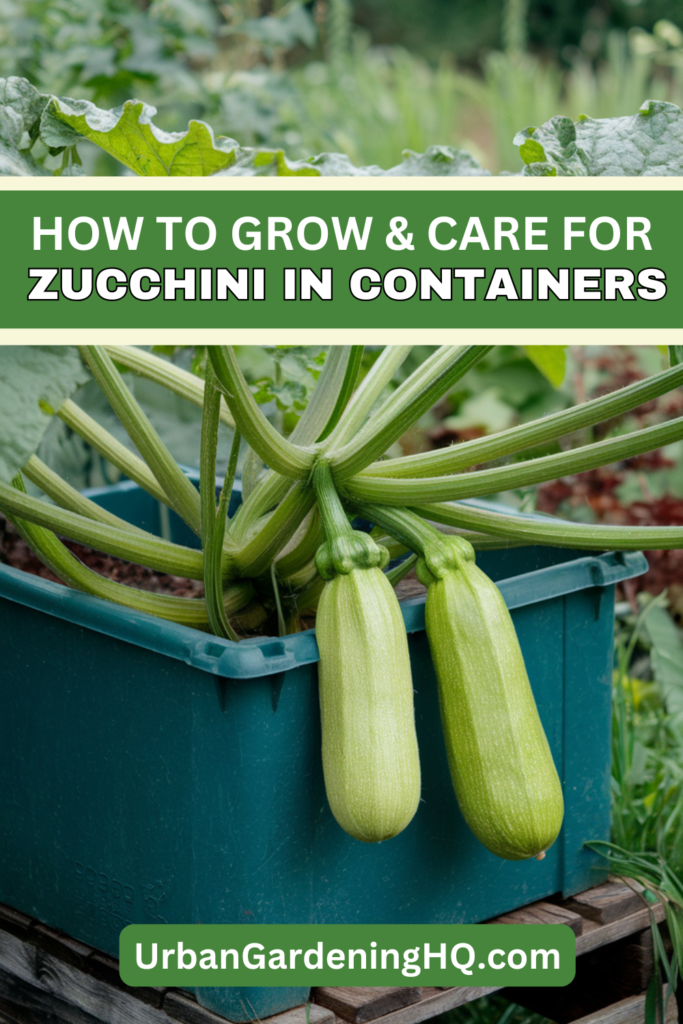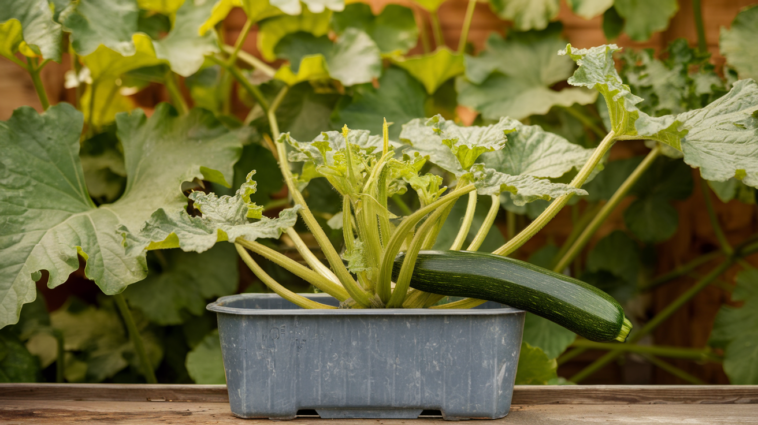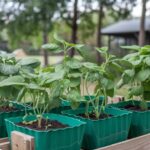Zucchini is one of the most rewarding vegetables I’ve ever grown in containers. With its fast growth, high yields, and delicious versatility in the kitchen, it has become a staple in my small-space gardening routine. Over the years, I’ve learned some essential tricks to ensure my container-grown zucchini thrives, and I’m excited to share them with you.
Choosing the Right Container
When I first started growing zucchini in containers, I underestimated how much space these plants need. Zucchini plants grow large and spread out, so I make sure to use a container that is at least 18 inches in diameter and 12 inches deep. I prefer large pots, half-barrels, or fabric grow bags, which allow the roots plenty of room to develop.
One of the most important factors is good drainage. I always ensure my containers have multiple drainage holes at the bottom. If necessary, I add a layer of gravel or broken pottery to prevent root rot and keep the soil from becoming waterlogged.

Picking the Best Zucchini Variety
Not all zucchini varieties are ideal for containers, so I always choose compact or bush types rather than sprawling vining varieties. Some of my favorites include:
- ‘Patio Star’ – A compact bush variety perfect for small spaces.
- ‘Astia’ – A French bush zucchini known for its early production and tidy growth.
- ‘Black Beauty’ – A classic, productive variety that still works well in large containers.
- ‘Golden Zucchini’ – A bright yellow variety that adds color to my garden and plate.
Preparing the Soil
Zucchini is a heavy feeder, so I use a rich, well-draining potting mix. I mix high-quality potting soil with compost, aged manure, or worm castings to ensure the plants get plenty of nutrients.
To improve aeration and moisture retention, I add perlite or coconut coir to the soil mix. Zucchini thrives in soil with a pH between 6.0 and 7.0, so I occasionally test my soil and adjust it as needed.
Planting and Spacing
I usually plant one zucchini plant per container to give it enough space to spread out. If I’m starting from seed, I plant 2-3 seeds per pot, about an inch deep, and thin out the weaker seedlings once they have a few true leaves.
For transplants, I make sure to plant them at the same depth they were in their nursery pots. Since zucchini is sensitive to transplant shock, I water them thoroughly after planting and try to do it on an overcast day or in the late afternoon.
Watering and Mulching
Zucchini needs consistent moisture, especially in containers where soil dries out faster. I check my soil daily and water whenever the top inch feels dry. In hot weather, I often water in the morning and sometimes again in the late afternoon if needed.
To help retain moisture and reduce temperature fluctuations, I always add a layer of organic mulch like straw or shredded leaves on top of the soil. This also helps prevent soil from splashing onto the leaves, reducing the risk of diseases like powdery mildew.
Sunlight and Temperature
Zucchini loves the sun! I place my containers in a spot that gets at least 6-8 hours of sunlight per day. If the summer heat becomes too intense, I move my containers to a location that gets some afternoon shade or use a shade cloth to prevent stress on the plants.
Zucchini grows best in temperatures between 65°F and 85°F, so I avoid planting too early in the season when nights are still chilly.
Fertilizing for Maximum Growth
Because zucchini is a heavy feeder, I feed my plants regularly. I start with a balanced, organic fertilizer (such as 10-10-10) when planting, then switch to a high-phosphorus fertilizer when the plants start flowering.
Every two weeks, I apply a liquid fertilizer like fish emulsion or compost tea to keep my plants vigorous and productive.
Pollination and Flower Care
One of the biggest challenges with container-grown zucchini is ensuring proper pollination. Zucchini plants produce both male and female flowers, and without pollinators, the female flowers won’t develop into fruit.
Since I grow my zucchini in a small space, I often hand-pollinate using a small paintbrush or by picking a male flower and transferring pollen to the female flowers. This has significantly increased my harvest.
Preventing Pests and Diseases
Container gardening helps reduce some pest problems, but I still keep an eye out for:
- Aphids – I spray them off with water or use neem oil.
- Squash bugs – I check under leaves for eggs and remove them by hand.
- Powdery mildew – I space my plants well for airflow and use a baking soda spray if needed.
- Blossom-end rot – I ensure my plants receive consistent watering and enough calcium.
Harvesting Zucchini
Zucchini grows quickly, and I’ve learned that harvesting early and often encourages more production. I pick them when they are 6-8 inches long, as they taste sweeter and have better texture at this stage.
For harvesting, I use sharp garden shears or a knife to cut the zucchini rather than twisting it off, which can damage the plant. If I miss a zucchini and it grows too large, I use it for baking zucchini bread or stuffing.
Final Thoughts
Growing zucchini in containers has been one of my most satisfying gardening experiences. With the right care, even a small patio or balcony can yield an abundant harvest. If you haven’t tried it yet, I highly recommend giving it a go—you’ll be surprised by how much zucchini you can grow in just one pot!
Whether you’re a beginner or an experienced gardener, container-grown zucchini is a fantastic way to enjoy fresh, homegrown vegetables with minimal space and effort. Happy gardening!


